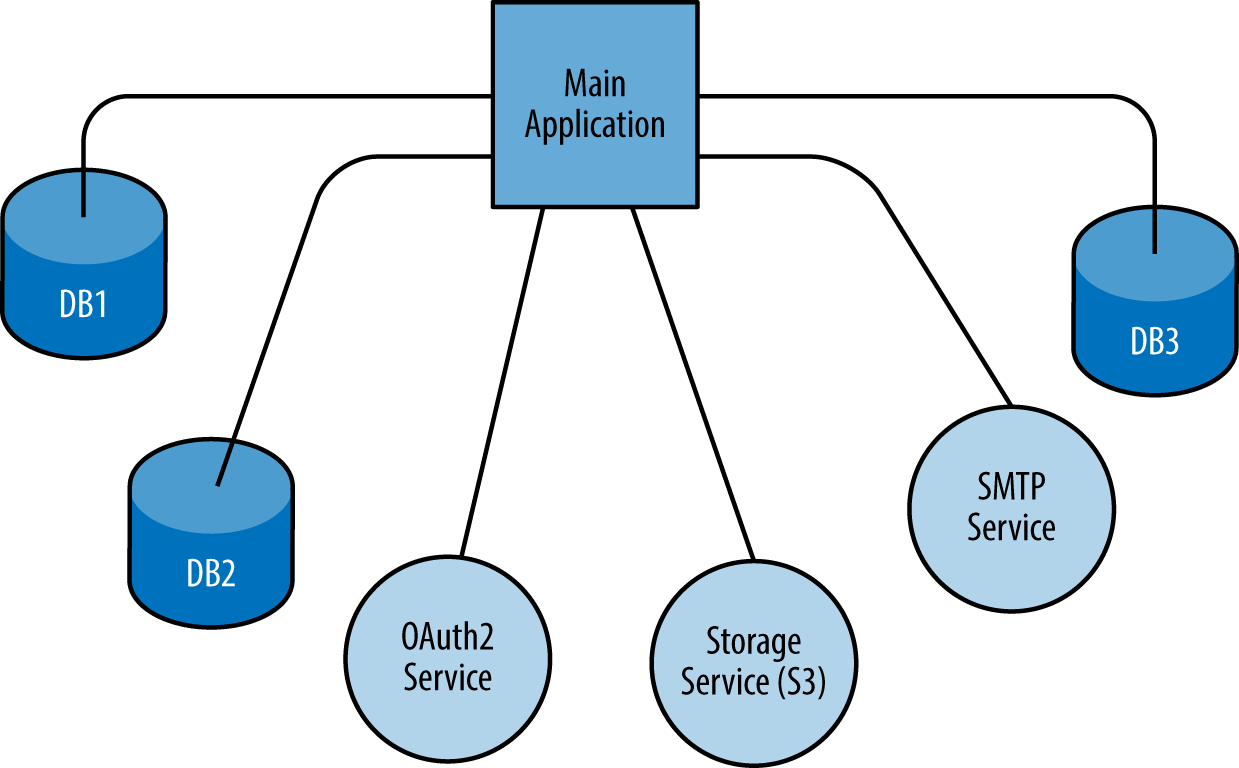Chapter 8. Backing Services
Factor 4 states that you should treat backing services as bound resources.
This sounds like good advice, but in order to follow this advice, we need to know what backing services and bound resources are.
A backing service is any service on which your application relies for its functionality. This is a fairly broad definition, and its wide scope is intentional. Some of the most common types of backing services include data stores, messaging systems, caching systems, and any number of other types of service, including services that perform line-of-business functionality or security.
When building applications designed to run in a cloud environment where the filesystem must be considered ephemeral, you also need to treat file storage or disk as a backing service. You shouldn’t be reading to or writing from files on disk like you might with regular enterprise applications. Instead, file storage should be a backing service that is bound to your application as a resource.
Figure 8-1 illustrates an application, a set of backing services, and the resource bindings (connecting lines) for those services. Again, note that file storage is an abstraction (e.g., Amazon S3) and not direct OS-level access to a disk.

Figure 8-1. An application relying on backing services
A bound resource is really just a means of connecting your application to a backing service. A ...
Get Beyond the Twelve-Factor App now with the O’Reilly learning platform.
O’Reilly members experience books, live events, courses curated by job role, and more from O’Reilly and nearly 200 top publishers.

